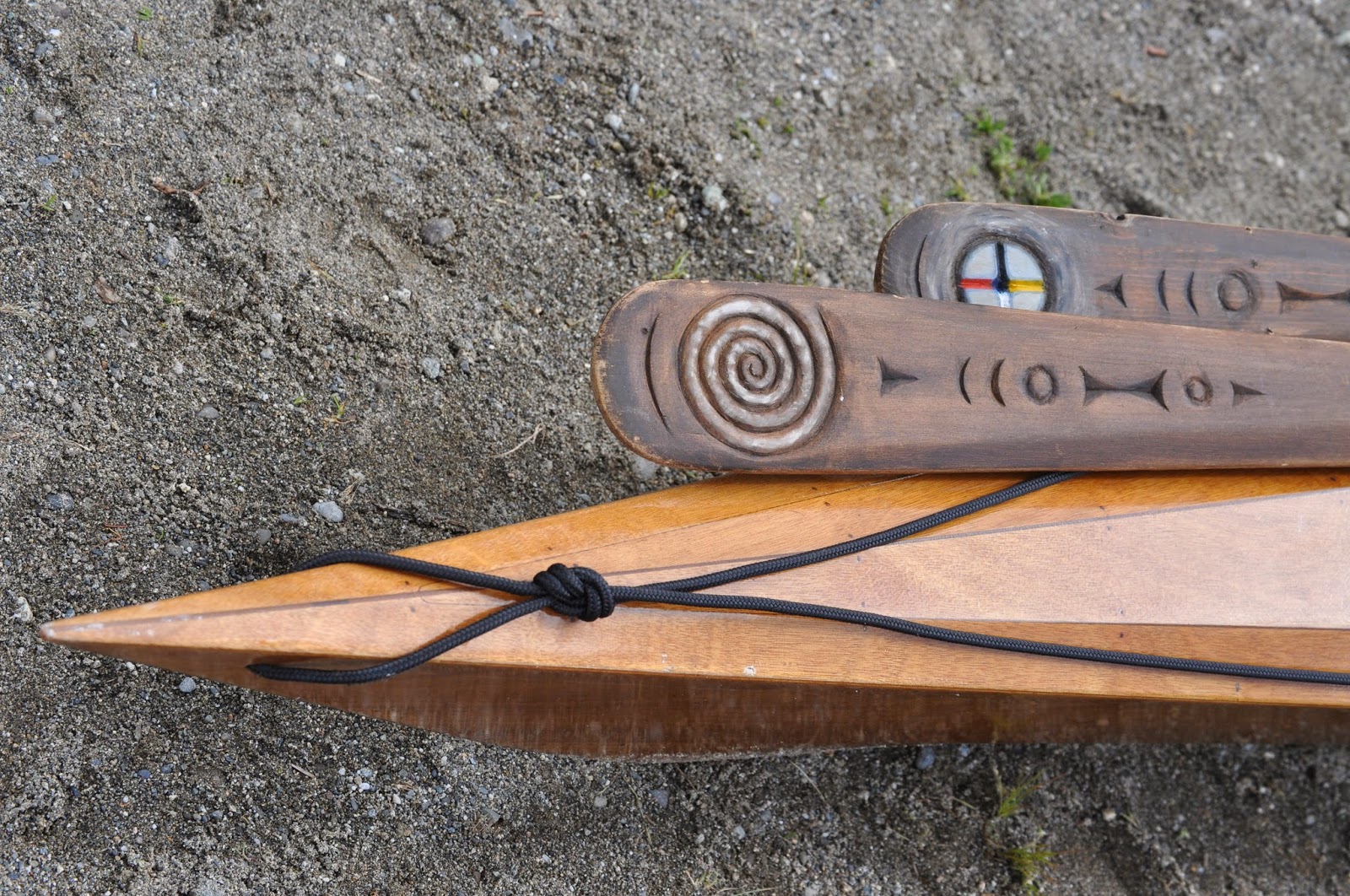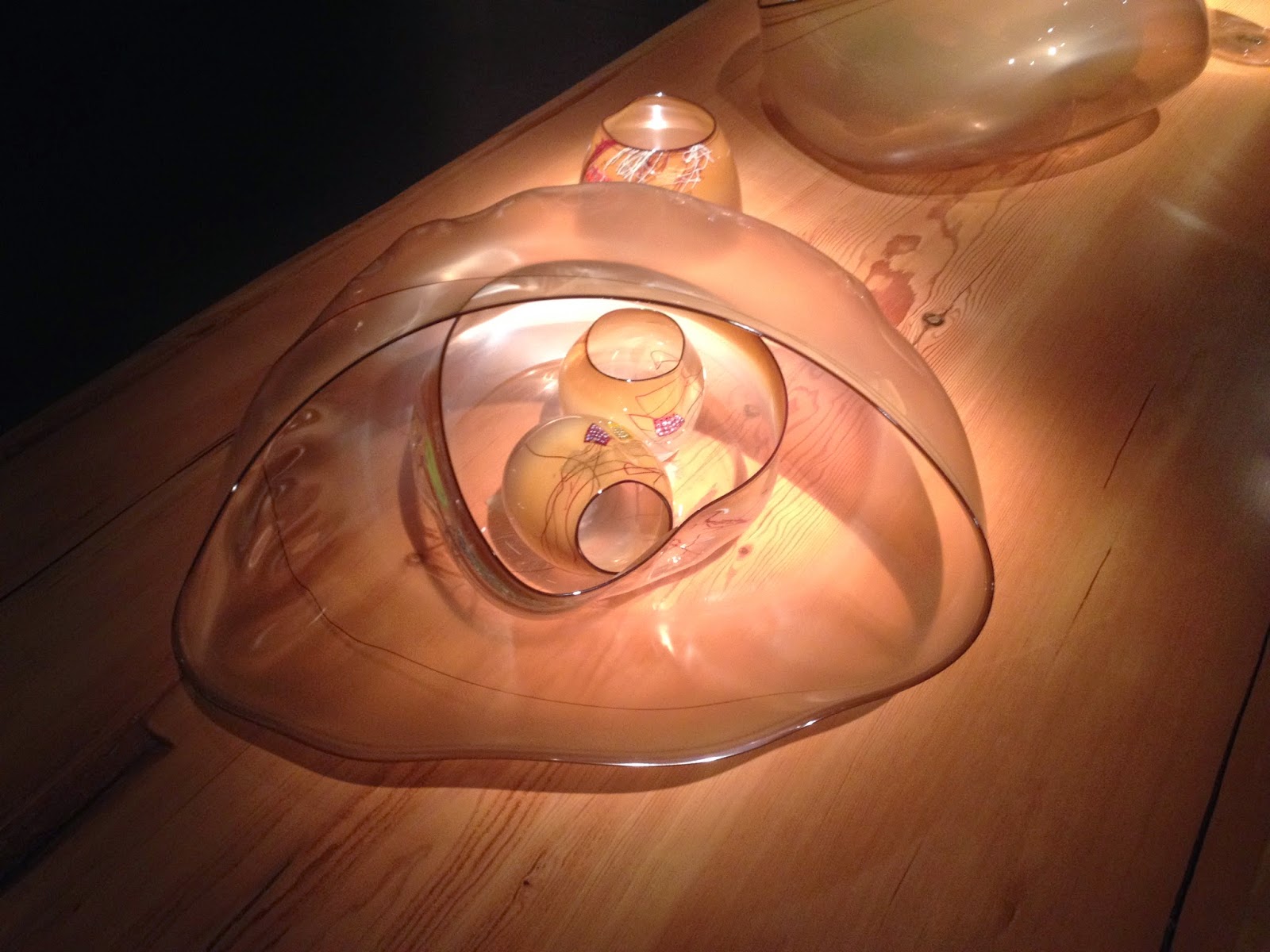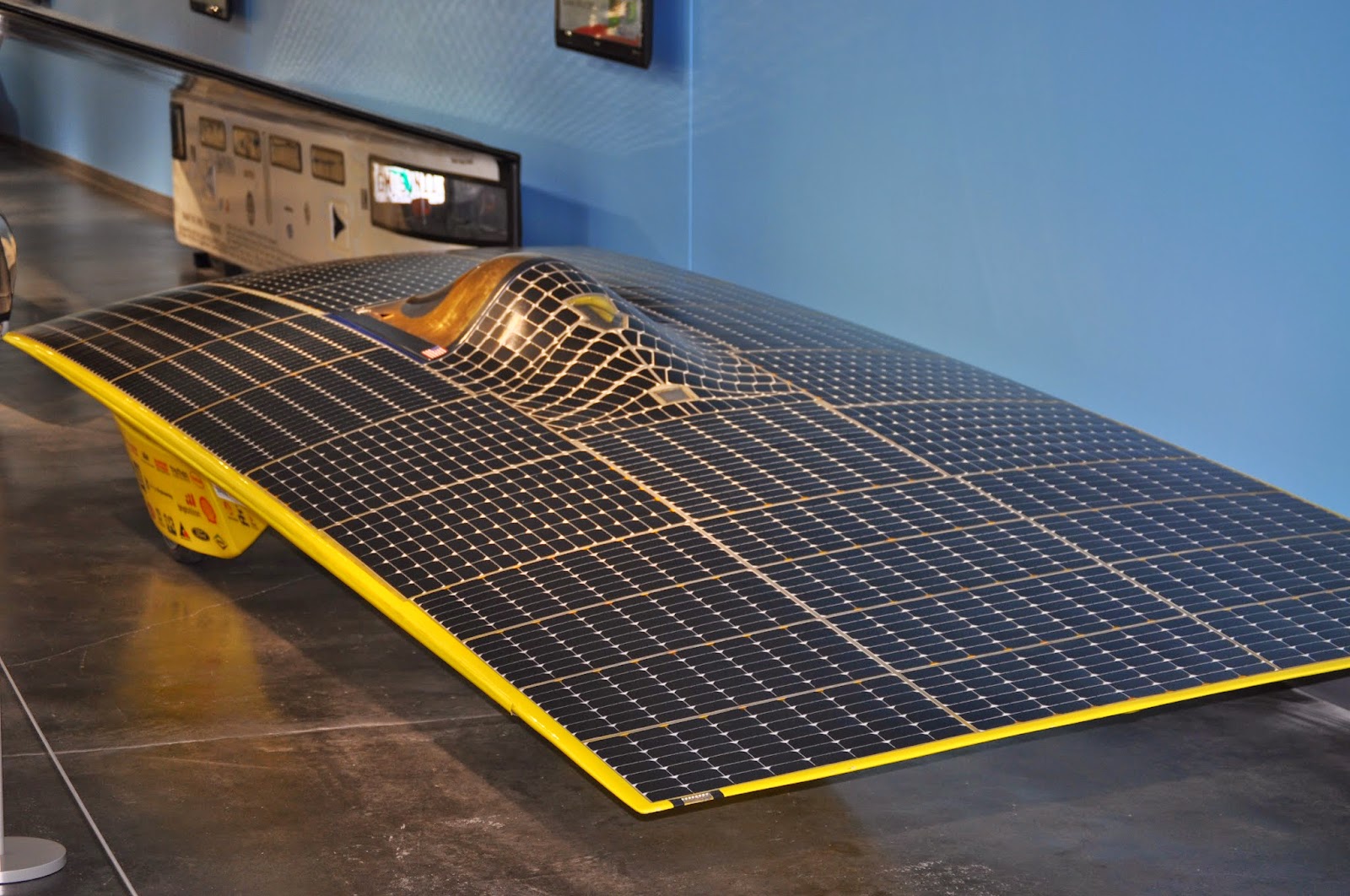Get ready everyone. Entries are going to get really erratic for the next few months
(not that they’re exactly regular as it is). We’ve now schussed through the Yukon, headed for
Alaska. Wi-Fi availability from
here on out will be iffy at best, especially out in the backcountry.
But let me catch you up with
our activities to this point. I
left you with us still in Washington, camped out in Tacoma. We spent another couple of weeks
tooling around the area and having fun.
Mount Rainier from the McChord flightline.
Heinz was inspired (or is it
obsessed) with the wooden boat concept and I spotted an ad for the Northwest
Paddle Festival. Turns out this is
a manufacturers show out at a local lake where you can see all the canoes/kayaks/paddleboards
in one place and even try them out if you want. The day was beautiful, the people friendly, and the kayaks
colorful. NO, we didn’t add a boat
to our traveling toy collection… at least not yet. Though Heinz still wants to make a skin-on-frame kayak!
Step right up and choose your color and style.
Watching people trying out the paddleboards and kayaks.
Wooden kayak that you can make from a kit.
How about his AND hers?
Hey, don’t forget the paddles, hand carved, of
course!
Back
in Seattle that afternoon we headed down to the City Center to check out some
of the attractions located in the area.
Of course, the Seattle Space Needle was
our first stop. Built in 1962 for
the World’s Fair, the proposed building was built by private investors on land
within the fairgrounds. It sits on
a plot of land 120 x 120 feet, purchased from the city of Seattle for $75,000. The domed top, housing the top five
levels, is perfectly balanced so that the restaurant rotates with the use of only
a 1.5hp motor. It was finished in
less than one year at the cost of $4.5 million. In May of 2007 the Space Needle
welcomed its 45 millionth visitor.
From the top you can get a bird’s eye view of the city (assuming the
weather is cooperating).
But our favorite view was of
the roof on a warehouse just down the street. This one had everyone ooh-ing and ahh-ing.
Is it a 3-D sculpture or a 2-D painting? You decide.
The
same goes for this one.
That same day we walked over
to the Chihuly Glass Museum and spent time
ooh-ing and ahh-ing over a whole different art form. This is a small, but exquisite museum displaying the works
of Dale Chihuly and his team of glass blowers. Chihuly was introduced to glass while studying interior
design at the University of Washington and enrolled in the first glass program
in the country at the University of Wisconsin. He was the first American to be hired by Venini Glass
Factory in Venice, where he learned the team approach to glass blowing,
critical to his current working method.
Chihuly’s work is included in more than 200 museum collections
worldwide. He is considered the
lead artist in the avant-garde glass art field. The museum has both indoor and outdoor vignettes and you
need to be sure to take in both.
Float
Boat. To give you a good idea
of the size of this installation, that”s a full-size canoe sitting on black
glass.
Macchia Series. Using every color available in the
studio this was an experiment adding a white layer between multicolored swirls,
a compatible inner solid color, and a contrasting rim color.
Northwest
Coast Basket Series, inspired by Northwest coast Indian baskets Chihuly had
seen as a child.
Seaform Series, ceiling in the
conservatory-inspired building.
Shape and color coordination are the keys to the
garden displays.
A glass tree.
The curves in these orange pieces echo the
rounded petals of the flowers.
What can you say, but “wouldn’t that look great at my house!”
After the Chihuly Museum we
thought about stopping in at another museum, but decided it was such a
beautiful day that we should just tool around the city instead, especially
since we were on the motorcycle. Speaking of the motorcycle, we sure missed that California
lane-splitting when caught in Seattle traffic. But, I digress.
Heinz took me to some of his favorite spots in Seattle, all ones I had
never seen before.
View of Mount Rainier from the Queen Anne
district.
Gas
Works Park - location of the original city gas works, now a public park.
Sailing…
Kayaking…
Even the tugboats looked cheerful.
And I know my feet felt glad
to be out of the motorcycle boots.
But there always seems to be someone you wish
had to work.
After a couple of “down
days” (our name for days to do chores such as laundry, house-cleaning, etc.),
we decided it was time to explore a bit of Tacoma. In true traveling tradition we headed straight for the LeMay America’s Car Museum to see how Americans
traveled in the past. This is a four-story collection of mostly American made
automobiles from the first days of motorcars powered by steam, to those using new
and alternative propulsion systems.
Most of the cars on display were part of the private collection of Harold
LeMay, a Tacoma business man who got his start after WWII as a car salesman and
later owned a refuse company in Tacoma.
By the time of his death, LeMay had amassed the largest private car
collection in the world. The
museum holds only a small portion of that collection (in a 500 car gallery!)
while the majority of the cars are at the LeMay FamilyCollection in nearby Spanaway.
At that location another 500 cars can be viewed at the historic
Marymount Military Academy, previously a school for boys and a convent before
being purchased by the LeMays to house their vintage car collection.
Just a great looking hood ornament.
1911 Flying Merkel.
2005 Momentum Solar Car - think alternative fuel propulsion systems are
new? Think again.
The 1912 Standard Electric Runabout - powered by 14 six-volt batteries, producing
12hp and a top speed of 35mph with a maximum range of 125 miles. In 1998, this vehicle was the only
electric automobile to complete the130-mile New London to New Brighton
Run. The original price was
$1,885.
The 1919 Stanley Steamer using a circular boiler
for power.
The museum also had a video game style area where you could try out
stock, Nascar, or Formula-1 racing.
Heinz took the opportunity to race the track at Spa Francorchamps in
Belgium – a track he visited back in 1983 during a Grand Prix race.
Other stops in Tacoma included
the Tacoma Glass Museum, a local conservatory a city park, and what had quickly
become our favorite restaurant in town, King’s Teriyaki and Burger.
The TacomaGlass Museum had some pretty neat pieces on exhibit by local and
international artists, but our favorite part was the “Hot Shop”. This is a large glass-blowing studio in
the heart of the museum with at least 7 kilns that we could spot. It has amphitheater style seating for
observers and is used by visiting artists. In addition it’s used by a local artists project teaching
children as young as 10 how to work with and blow glass. Many of the objects made in the Hot
Shop are sold in the museum gift shop.
Exhibit by local artist.
Exhibit by local artist.
The Hot Shop in action.
The Wright Park Arboretum.
A Dragon orchid in the hot house, about the size of a child's head.
Hey, throw me a bone Mister – ah fish food!
Our last day in Seattle was
spent back down at City Center checking out the EMP Museum and the Pacific
Science Center.
The Experience Music Project(EMP) is housed in a building designed by architect Frank Gehry (think
strange). The undulating lines and
colorful façade are meant to be a monumental sculpture that evokes the rock n’
roll experience without being literal.
It’s said that Gehry bought several guitars, sliced them into pieces,
then used the pieces as building blocks for early design models. The museum showcases artifacts from
music, cinema, and science fiction.
There are 3 levels, each with a different focus. Level 1 includes a restaurant, a
theater that is home to video and film festivals, guest lectures, and workshops
and a Rec Room with family friendly activities including child-size
instruments, books, coloring books, toys, etc. Level 2 houses special exhibits, icons of science fiction and
fantasy, films, and Sky Church, a centerpiece screen 2 stories tall featuring
musical performances from the 1950’s to present day. Level 3 experiences include exhibits on the influence of
music videos on pop culture through original props, interactive experiences and
over 300 videos. It also has a
sound lab where you can explore musical gear and audio technology through
hands-on experiences and record yourself playing an instrument or singing.
Three thousand panels, made up of 21,000 individually
cut and shaped stainless steel and painted aluminum shingles, the individual
finishes respond to different light conditions and appear to change when viewed
from different angles, meant to remind the viewer that music and culture is
constantly evolving.
Tower of rock
instruments reaching up two stories.
Jimi Hendrix painted this guitar on June 4, 1967 to commemorate his last
concert in London before returning to the U.S. to play at the Monterey Pop
Festival. He broke and burned the
guitar at the end of the performance as a sacrifice to his art and the end of
his life in England.
On June 18, 1967 the Jimi Hendrix Experience made their U.S. debut at
the Monterey Pop Festival. The
group played a concert of their UK hits, along with adaptations of Howling
Wolf’s Killing Floor and Bob Dylan’s Like a Rolling Stone. At the end of Hendrix’s cover of
the Trogg’s Wild Thing he lit this
Fender Stratocaster on fire and smashed it to mark his dramatic return to the
U.S. Despite his reputation for
destroying instruments, these were the only two ever smashed by Jimi
Hendrix.
I’m not too sure that Heinz
was all that enthused about heading into the Icons of Science Fiction, Fantasy,
and Horror films exhibit, but boy, did he get into it quick. It was fun seeing costumes, props, and trailers
or clips of horror movies from our growing up years.
The hat of the Wicked Witch of the West from The Wizard of Oz, 1939.
One of my favorites movies, I must have seen it at least 20 times over
the years.
A soldier of the Wicked Witch
and the Cowardly Lion from The Wizard of
Oz.
Captain Kirk’s command chair, complete with Tribbles.
T-800 skull from Terminator 2:
Judgement Day.
Zombie costume worn by Michael Jackson in Thriller, 1983.
Need I say more?
After finishing up the EMP
we took a break for lunch then it was off to the PacificScience Center. This is a
hands-on, interactive museum that we learned is really a museum for people with
children, so we cut our stay short.
Most of the exhibits are geared toward the 5-10 year old crowd. But I did enjoy myself in the butterfly
house.
The iconic arches above the Pacific Science Center.
From caterpillar to butterfly in the hatching box.
Dinner time.
With this coloring predators beware…is this dinner or will you be on the
plate?
Our last Seattle stop was at
that icon of all Seattle icons, the Pike Place Public Market, and yes, we got
to see the fish tossed around, but sorry, no photos of the event.
Pike Place Market sign.
Flowers on offer from a vendor.
Home of the flying fish.
We finished up our time in
Tacoma with a kayaking trip around Hope Island on the western side of Puget
Sound. I wasn’t the fastest
paddler along, but I persevered and made it the whole 10 miles of paddling.
At the start of the excursion, feeling fresh and eager.
Stopping for lunch.
Hmmm…how far back was it to the car?
The last week of May we
hopped on a plane and flew to Arkansas for a week of family events. First up was the annual Littlejohn
family reunion in Texarkana, Texas.
My dad’s family has been meeting up over Memorial Day weekend for as
long as I can remember. The
Littlejohn’s are a smallish clan, hence only about 80+ people show up every
year. It’s always a blast and if
you don’t know someone already, you simply ask, “OK, who do YOU belong
to?” The appropriate answer is to
name which member of the oldest generation you descend from, or if you’re too
young for that, simply point to your mom or dad and leave the adults to figure
it out. There’s never a lack of
food or hilarious family stories, not to mention horseshoes, bean bag toss,
fishing, sleeping, eating, and sleeping again until the next meal is ready, all
while shifting your lawn chair into the shade as the sun moves throughout the
day.
A shot from an early reunion. That’s me, second from the right,
standing in front of my brother Joe and sister Kathy.
My, how times have changed.
That’s Kathy on the far left, Joe in the middle, and me behind him. The others are my dad, Heinz, and my
sister-in-law Annette. My sister’s
husband missed the photo op as he was out fishing.
The oldest in attendance was my dad, age 92…
…while the youngest was my cousin Ray’s new
granddaughter, age 3 months.
I did mention food didn’t I?
Loading up on BBQ chicken, brisket, and ribs with all the
trimmings.
Fried fish on Saturday…
Ribs on Sunday. Diet? What diet?
Nothing like a little beanbag toss to work off
lunch.
Heinz and Cody, a cousin…but is he a 2nd
cousin or 2nd cousin once removed? Find my dad quick, he’s the only one who can ever figure
this out!
After the reunion we drove
north to Eureka Springs Arkansas for the wedding of one of Heinz’s
cousins. Along the way we stopped
in at the Crystal Bridges Museum of American Artin Bentonville, Arkansas. The
museum was founded by Alice Walton, daughter of Sam Walton of WalMart fame and
fortune. The museum’s glass and
wood design by architect Moshe Safdie features a series of pavilions nestled
around two creek-fed ponds. All
operating and acquisition costs are funded by an $800 million endowment by the
Walton Family Foundation. This
gives the museum the unusual freedom to charge no entry or parking fees to
visitors for either the museum or for special events such as summer concerts.
Crystal Bridges Art Museum.
The exhibit halls are spacious and the
collection ranging from Colonial and early 19th century art to 20th
century works is considered one of the country's finest.
Tree sculpture in the center of the
circular driveway in front of the museum.
Arriving in Eureka Springs
Arkansas, it was time to meet up with Heinz’s extended family for the wedding
of his cousin, Grady. Eureka
Springs is located in the Ozark Mountains. A small place, population 2,073, the entire town is on the
National Register of Historic Places.
The city has steep winding streets filled with Victorian-style cottages,
manors, and buildings constructed of local stone. Due to the rise and fall of the streets some buildings have
street-level entrances on more than one floor. Also, due to the mountainous terrain of the town, the
streets wind up and around with no two intersecting at a 90-degree angle.
The first “Flatiron” building in the U.S., built
1890. Many others were constructed
across the country, most famous of them, the 1902 Flatiron Building in
Manhattan.
The quickest way to get around town is to
use the staircases built between buildings every block or so.
But, we were there for a
wedding. The bride and groom had
chosen Eureka Springs for their wedding, and the draw was the beautiful Thorncrown Chapel. Designed and constructed in 1980 by E. Fay Jones, an
apprentice of Frank Lloyd Wright, the building had been commissioned by Jim
Reed, a retired schoolteacher. The
chapel is constructed mostly of wood and other materials indigenous to
northwestern Arkansas. Though it
looks like an open-air structure, the chapel is a glass-enclosed, conditioned
space.
The building was selected
for the 2006 Twenty-five year Award by the American Institute of Architects,
recognizing structures that have had a significant influence on the
profession. This was an amazing
accomplishment as the rules of the award state that buildings must be older
than 50 years or be of exceptional significance.
Final moments as a bachelor, the groom is sitting by the window.
It’s official…Mr. and Mrs. Grady Walker.
First dance.
Cutting the cheesecake?
The day after the wedding it
was back to Tacoma to pick up our home and move it towards Alaska. After a 5-day drive through British
Columbia and the Yukon, we are now safe and sound in Fairbanks Alaska. But that’s a bedtime story for another day.
So for now I’ll leave you
with our friends of the day, dogs of all shapes and sizes from the family
reunion.
For God’s sake don’t move, I’m finally
comfortable.
Today’s math question…if the human is 6 feet, that makes the dog how
tall?
I’ll be glad to help you with that snack!
BUT - I thought everything was BIGGER in Texas?



























































































No comments:
Post a Comment